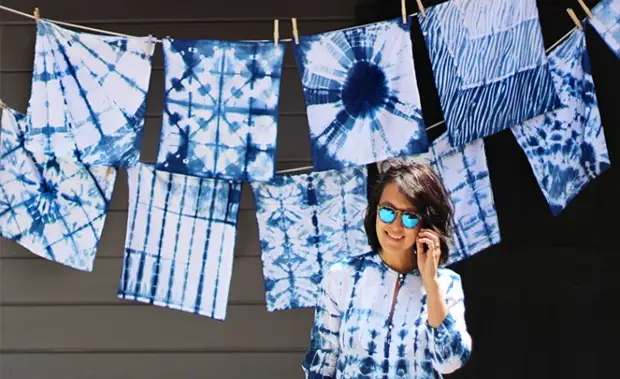
Today we will show you something amazing. Sibori is a Japanese fabric coloring technique using soaking, firmware, folding, or compression.
To create drawings in Sibori's technique, both different pigments that give multicolor patterns and monophonic paints are used. Most paintings are performed using an indigo pigment that gives a beautiful deep blue color. Also, these pigments originally painted the first jeans, so the real denim color is actually an indigo color.
Of course, Masters Sibori create real works of art. It is enough just to look at some kimono of the work of Japanese masters.
However, Western people adapted Sibori under themselves. One of the methods became very popular, having received the name "Tai Give" (Tie-Dye, literally from the English. Zaezhi-painting). Hippie entered the fashion. In the USSR, in connection with this, at the end of the 70s - the beginning of the 80s, fashion arose for "boiled" jeans, "Warrens".
We offer you to experiment yourself. You will learn how to make gorgeous, nothing to do. Try, and you yourself make sure.
You will need:
- dyes for fabric color indigo and paint fixer, such as such
- Natural cloth or just a piece of fabric
- 2 large buckets
- latex gloves
- Small square wooden planks
- Rubber
- threads, braid or twine
- PVC tube
- Long wooden wand
- scissors
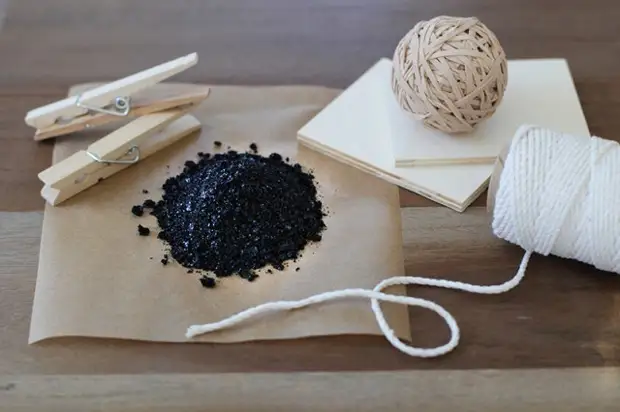
It is important that the tissue used is natural. Better is suitable for flax, silk, cotton or wool. Before the coloring fabric is better to wash. We will paint rectangular napkins, but of course you can use a cloth or clothing of any form.
Here are some basic.
Itajime Shibori. To begin with, fold the fabric by the harmonica.
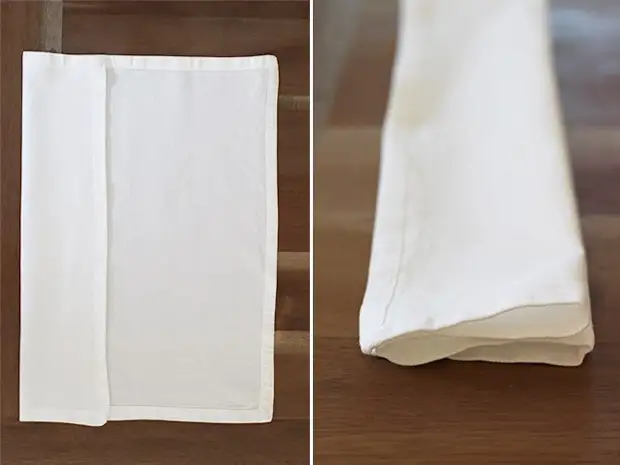
And again fold it with the accordion, now in another direction. Place the tissue between two planks or something flat and tie a thread or fasten with rubber bands. They prevent the penetration of the fabric in the places that they are covered. The more the resulting square, the more rubberry and threads are used, the more white will be in your drawing. The smaller the resulting square, the smaller the elastic and thread, the greater the blue.
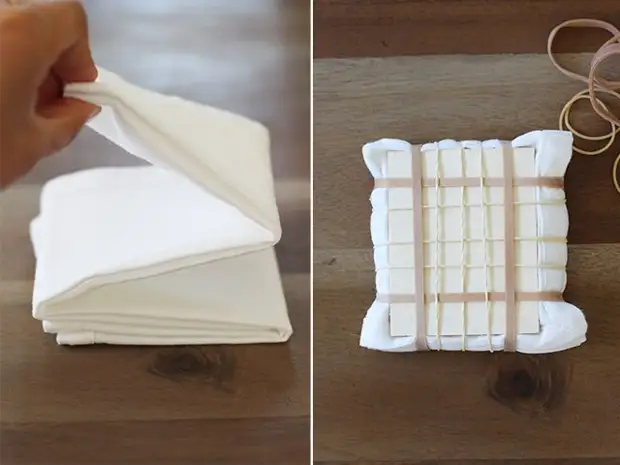
Arashi - Translated from the Japanese Storm. It lies in the wrapping of the tissue around the tube. First wrap the entire tissue around the tube diagonally. Then wrap the base of the tube with the twine and tie a double knot.
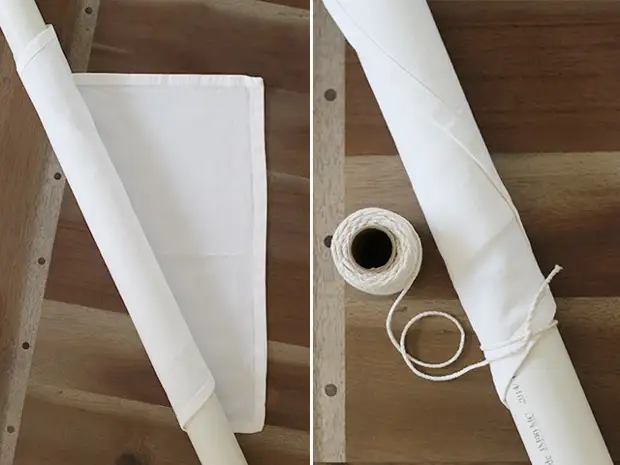
Start wrapping the rope around the fabric. After 6-7 revolutions, slide the fabric down so that she gather harmonic, tighten the twine.
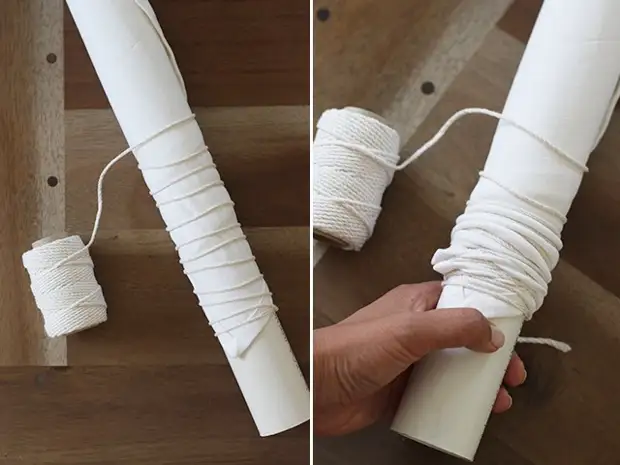
Continue to wrap the tube of the twine and pull the cloth until the entire piece is assembled by the harmonic. Tie the twine knot from above. In places closed by the twine, you will have white stripes on a blue background.
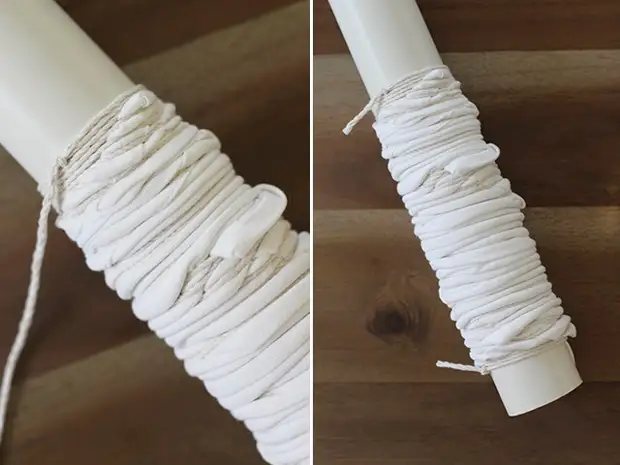
Kumo. Shibori is bending and folding the fabric in the harnesses. With this technique you can experiment infinitely. For example, first fold the fabric by the accordion, and then with a gum twist small flagellas.
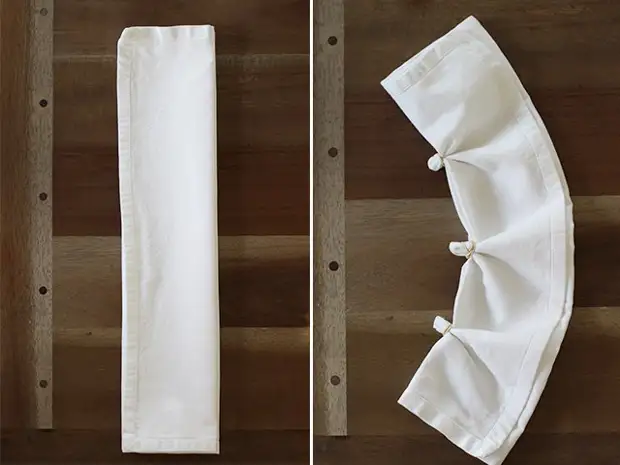
Make the same flagellas from the opposite side.
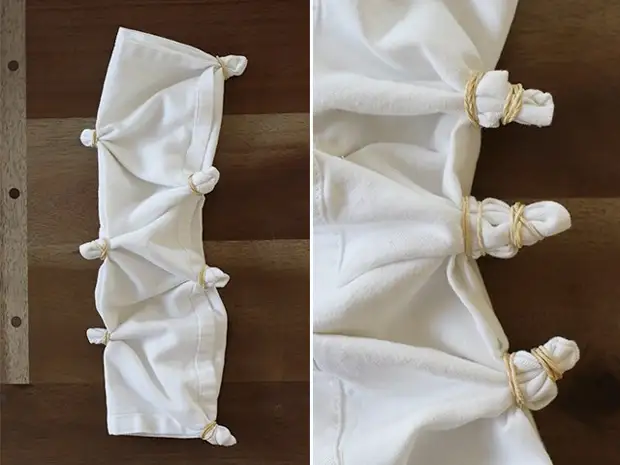
Continue until new harnesses are impossible to do. Take additional rubber bands and make a tight bundle.
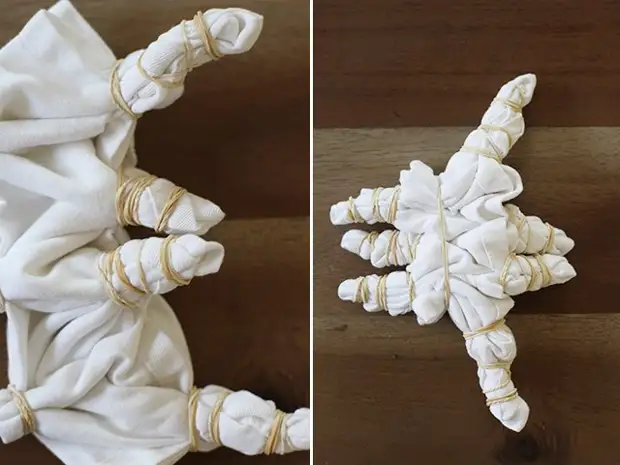
You can use everything you have at hand for flexing and folding the fabric: clothespins, pins, rope. It is impossible to make Sibori wrong!
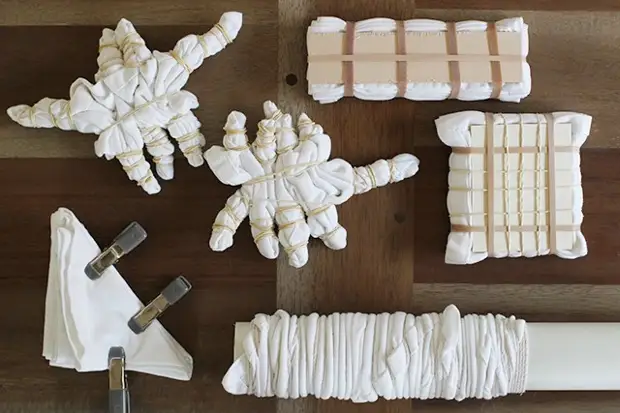
Dissolve the dye in water, as indicated in the instructions. Stir it with circular motions.
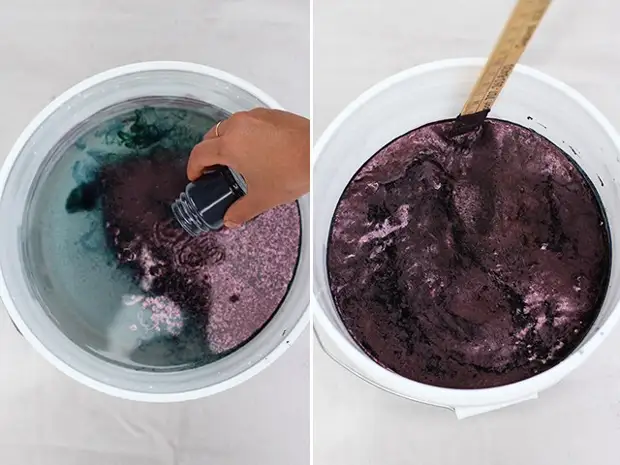
Then add an activator and fixer. Stir again in a circle, then in the opposite direction. It is important that the paint is not saturated with oxygen, so it is necessary to mix it with caution.
When the paint is well mixed, cover it and leave at least an hour. You will see that the paint was covered with an oil foam, under which the yellowish-green liquid is glad. Paint is ready, you can start.
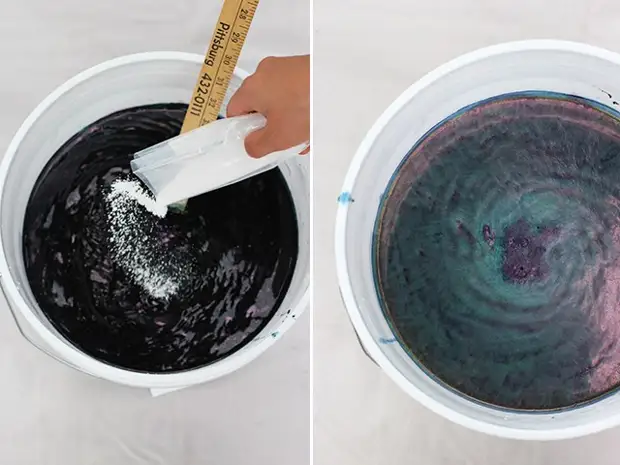
First, rinse the fabric in a bucket with clean water, lick all the water and then immerse it in a bucket with paint. Gently press the fabric with your hands so that the paint absorbed, while trying not to take her.
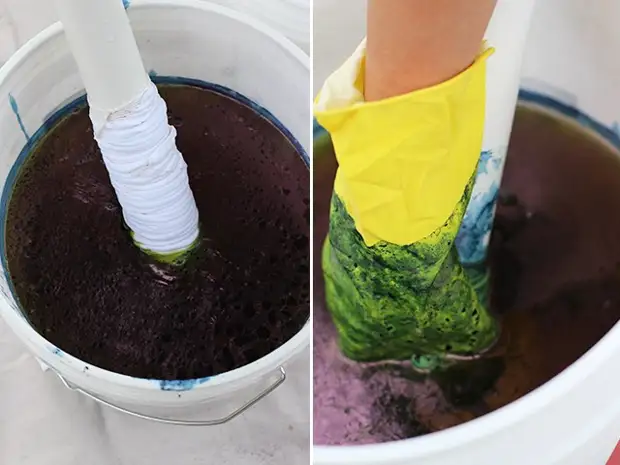
Five minutes later, the cloth can be removed. It will be green, but do not worry, soon, in the influence of oxygen, the paint will change the color and will become blue.
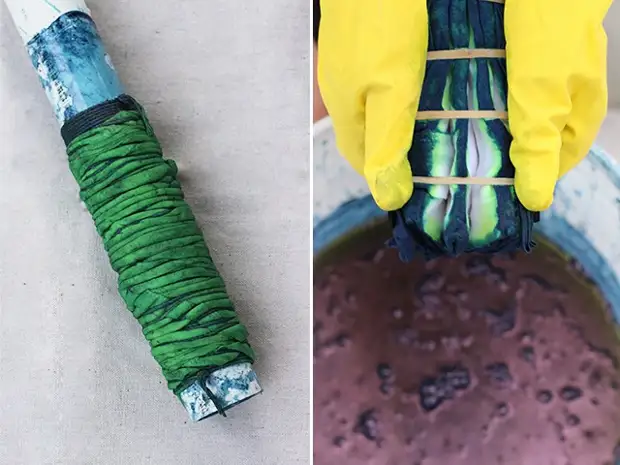
Color all the fabric, wait until it becomes blue and repeat the process as many times as you think. Remember that in a wet state the color of the fabric is darker than it will be after drying. Also, he will slightly lose color at the first washing.
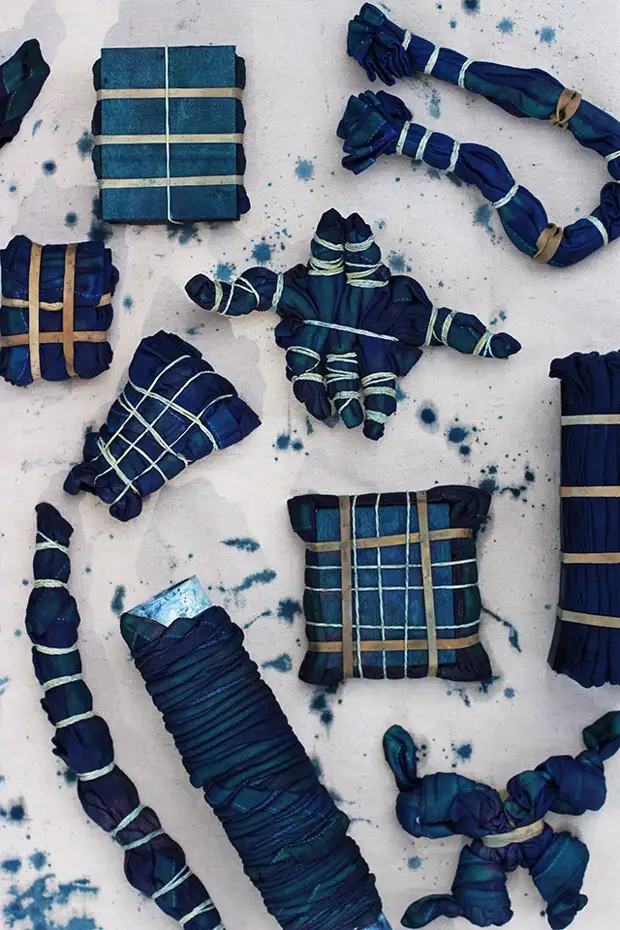
Leave the convolutions slightly dry before deploying. For example, overnight. Put the clean pair of gloves, take the scissors and move closer with water. Now rinse each bundle and gently cut the threads and gum.
See what effect? Paint sometimes penetrates on the closed wooden plate of the fabric. And it gives a stunning result. In this charm of Sibori - there are no mistakes!
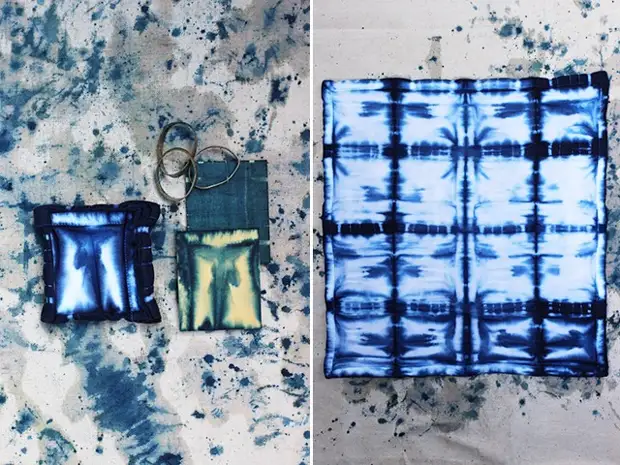
Now let's see the next bundle.
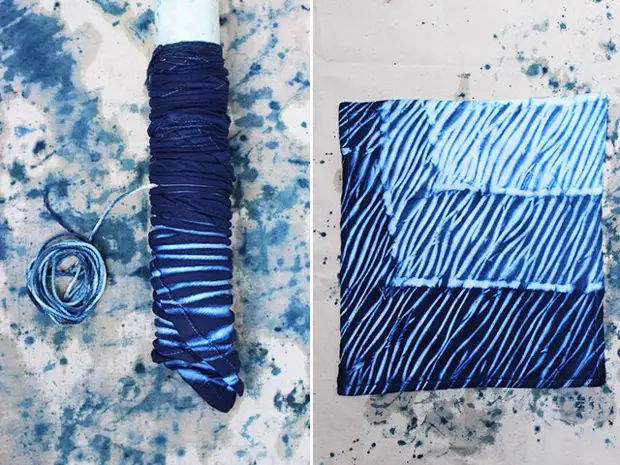
And one more.
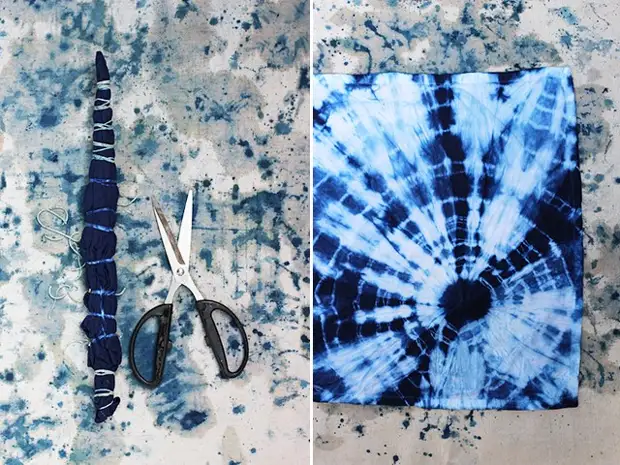
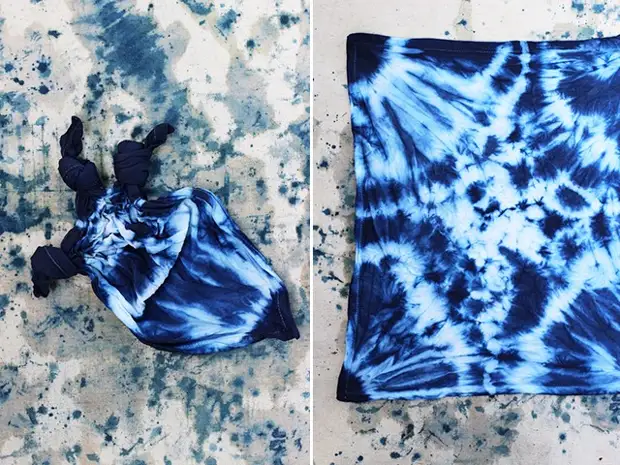
After you unfold all the fabric, post it in a cool water washing machine without powder. Then dry on a low temperature and swing to fix the color.
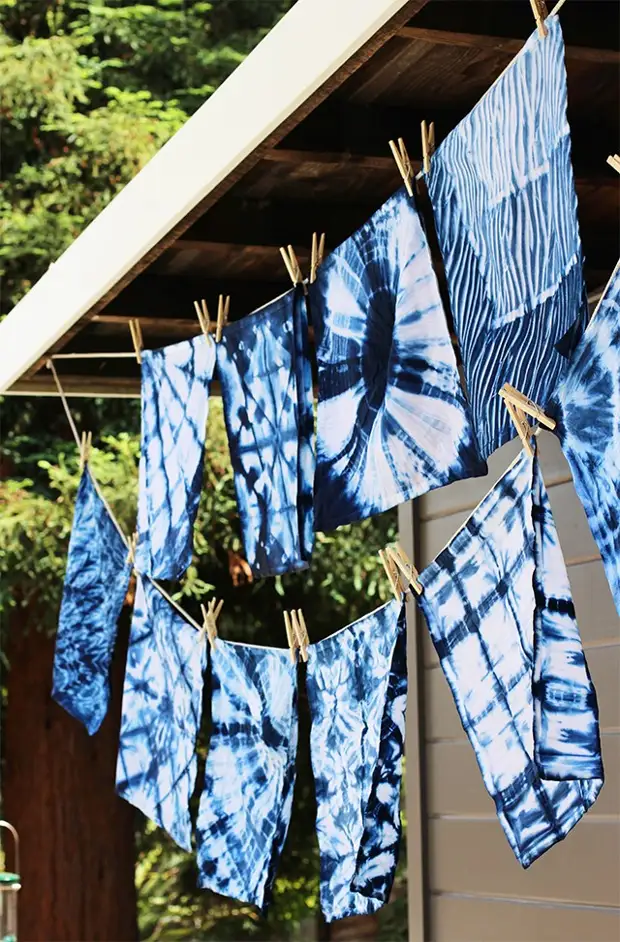
A source,
